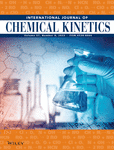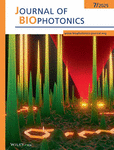Journal list menu
Export Citations
Download PDFs
Editorial
Open Access
oa
Dye-Sensitized Solar Cells: From Materials to Devices
- First Published: 25 September 2013
Research Article
Open Access
oa
Glass Frit Dissolution Influenced by Material Composition and the Water Content in Iodide/Triiodide Electrolyte of Dye-Sensitized Solar Cells
- First Published: 22 July 2013
Research Article
Open Access
oa
Ultradurable Dye-Sensitized Solar Cells under 120°C Using Cross-Linkage Dye and Ionic-Liquid Electrolyte
- First Published: 11 July 2013
Research Article
Open Access
oa
Alignment of TiO2 (Anatase) Crystal of Dye-Sensitized Solar Cells by External Magnetic Field
- First Published: 11 June 2013
Research Article
Open Access
oa
Natural Dye-Sensitized Solar Cells Based on Highly Ordered TiO2 Nanotube Arrays
- First Published: 22 May 2013
Research Article
Open Access
oa
Particle Size Effects of TiO2 Layers on the Solar Efficiency of Dye-Sensitized Solar Cells
- First Published: 16 May 2013
Research Article
Open Access
oa
Integration of High-Performance Nanocrystalline TiO2 Photoelectrodes for N719-Sensitized Solar Cells
- First Published: 16 May 2013
Research Article
Open Access
oa
A Facile Synthesis of Granular ZnO Nanostructures for Dye-Sensitized Solar Cells
- First Published: 07 May 2013
Research Article
Open Access
oa
DFT Study of Binding and Electron Transfer from a Metal-Free Dye with Carboxyl, Hydroxyl, and Sulfonic Anchors to a Titanium Dioxide Nanocluster
- First Published: 30 April 2013
Research Article
Open Access
oa
Theoretical Study of Copper Complexes: Molecular Structure, Properties, and Its Application to Solar Cells
- First Published: 10 March 2013
Research Article
Open Access
oa
Computational Nanochemistry Study of the Molecular Structure and Properties of Chlorophyll a
- First Published: 22 January 2013





